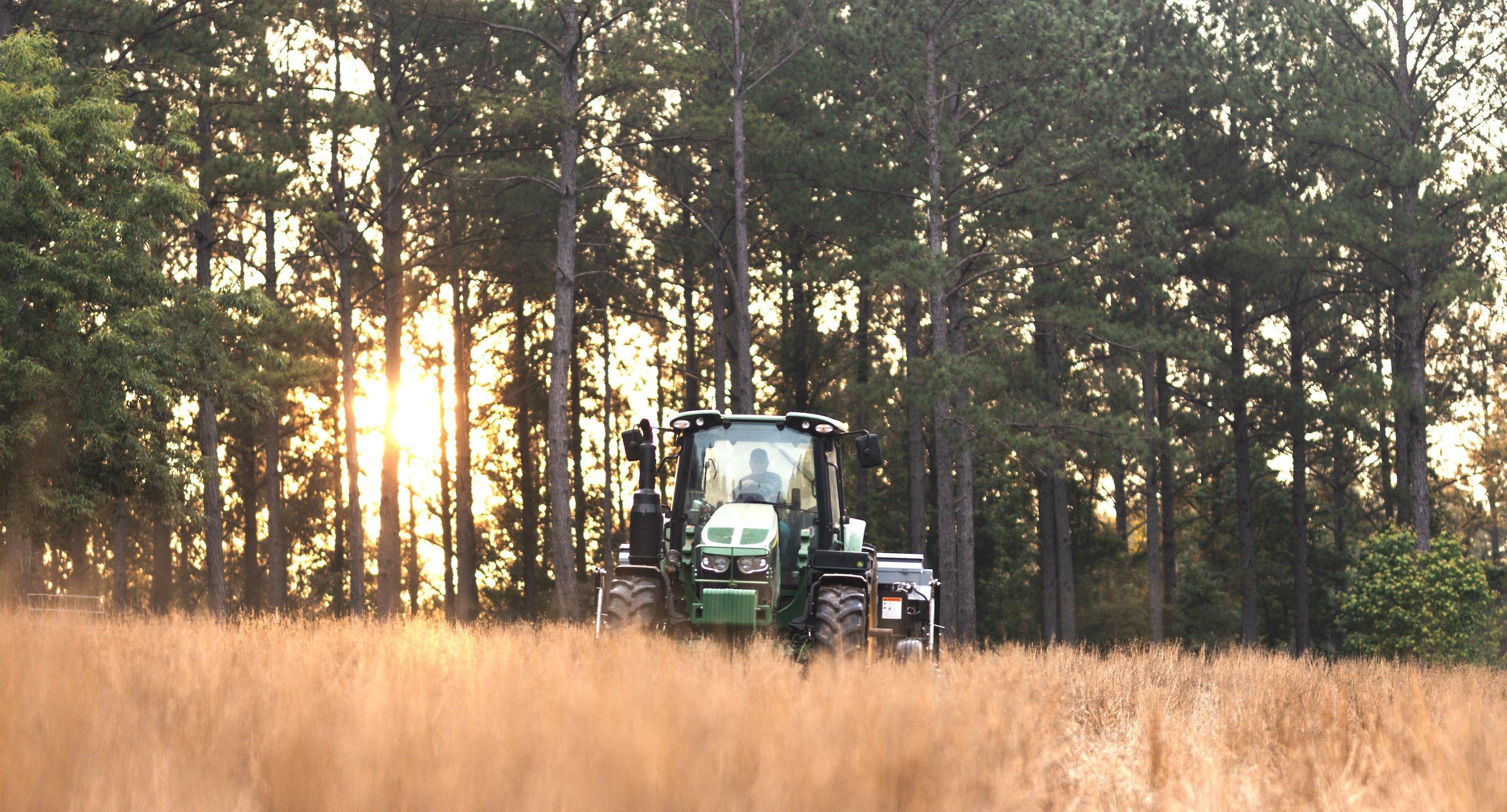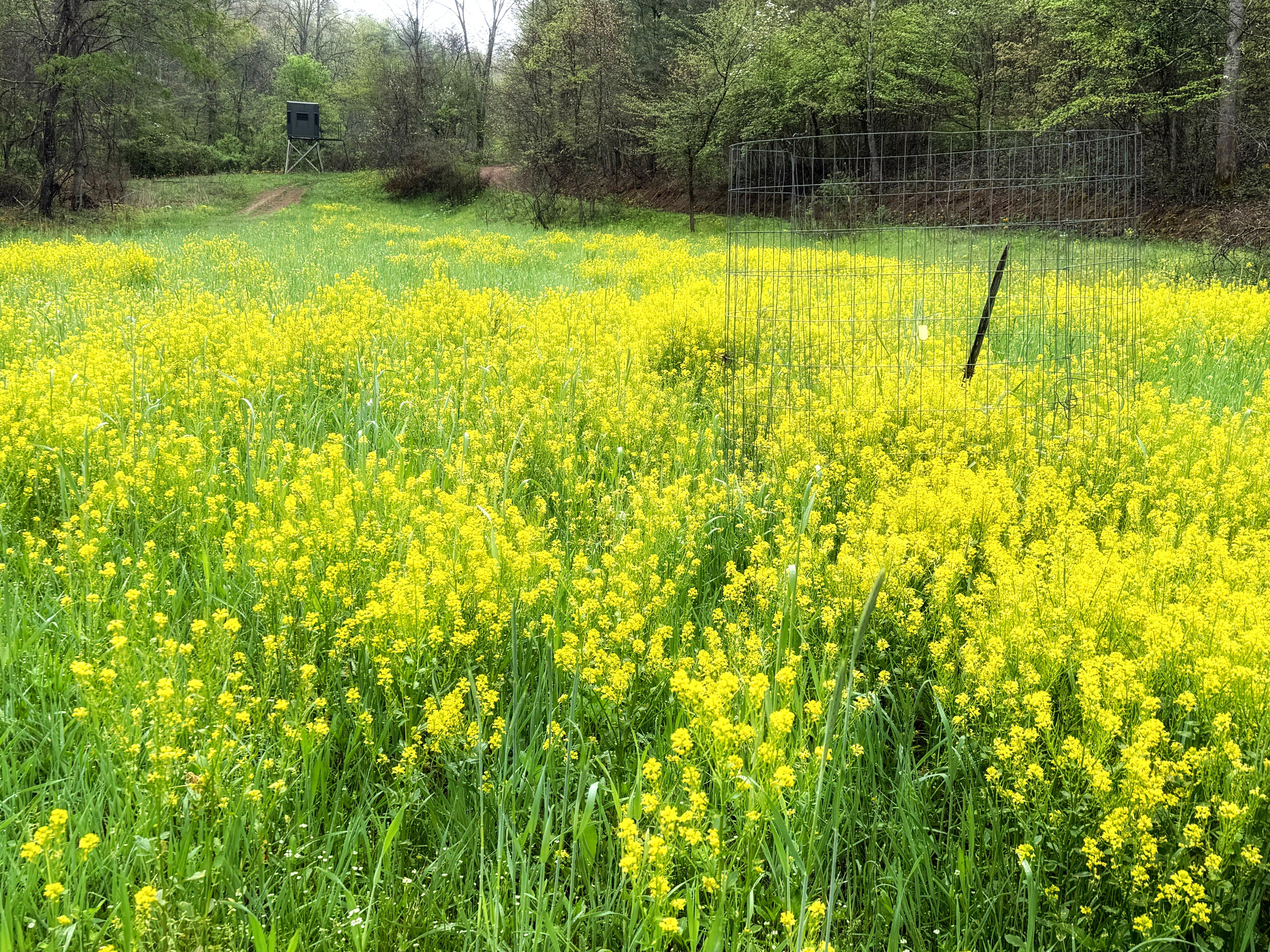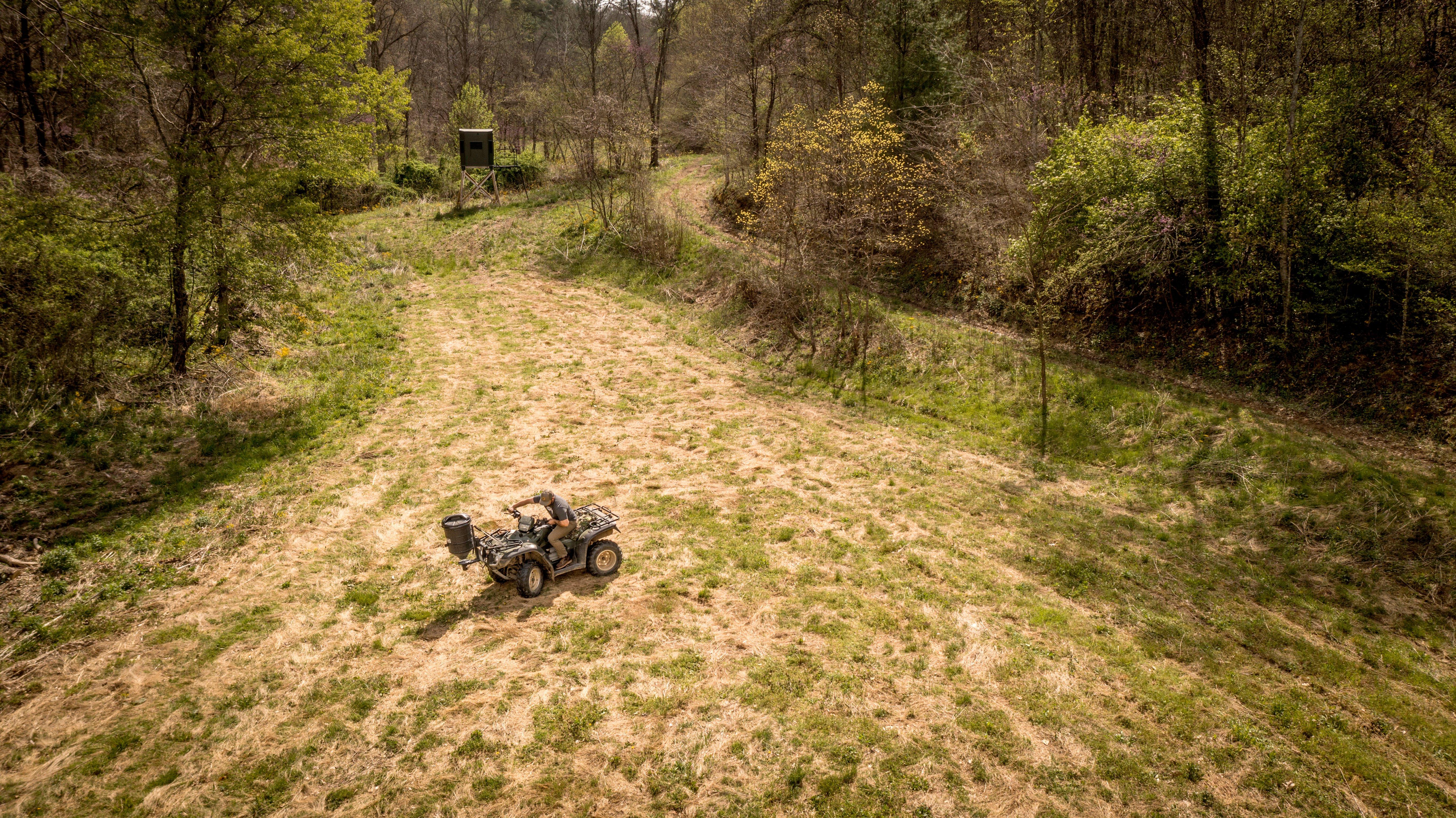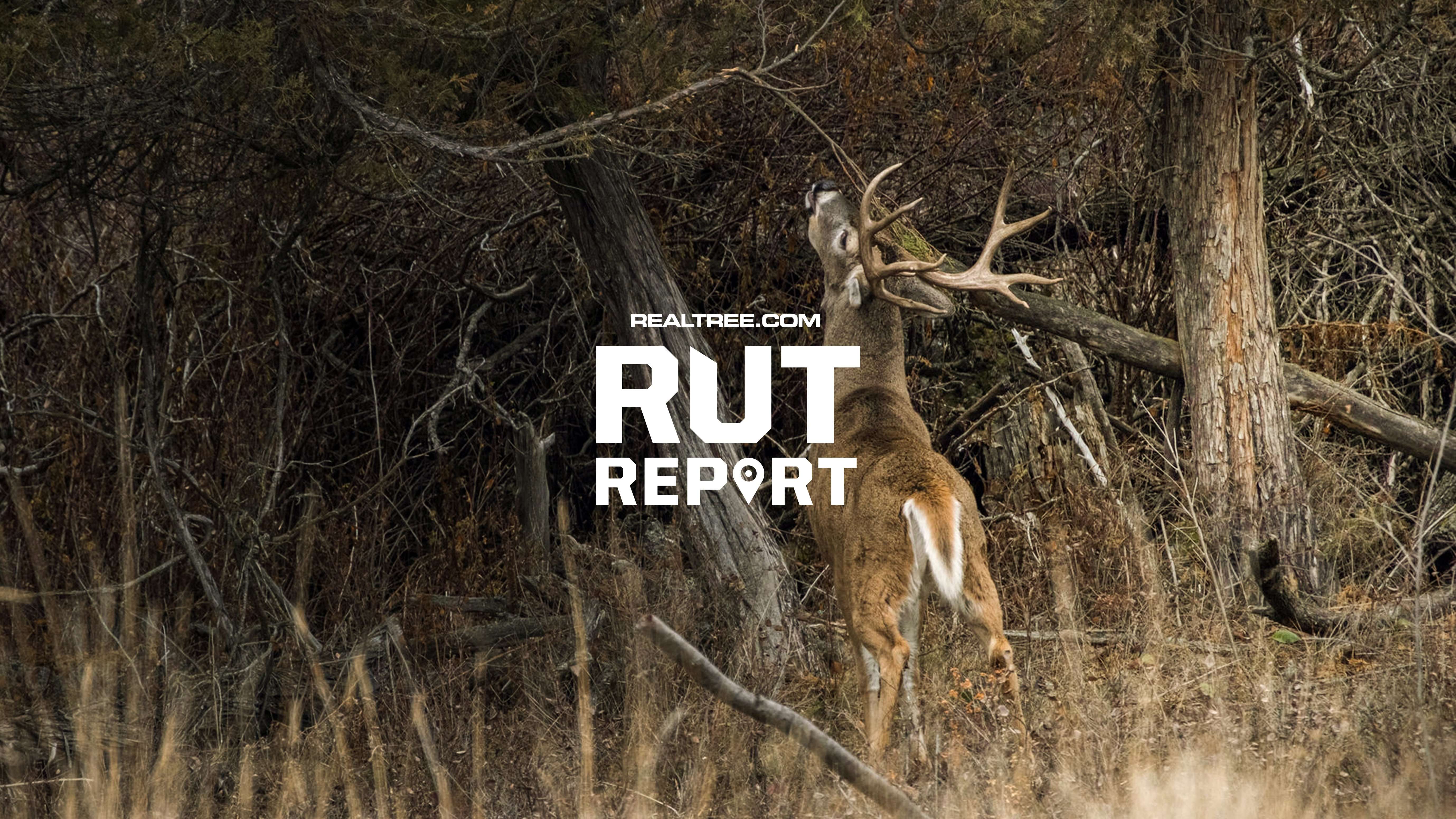Planting food plots for wildlife can be frustrating, but expert land managers have several tips on how to avoid the biggest pitfalls

Creating lush food plots can be difficult unless you follow best practices through every step of the process. Realtree photo.
Every land manager has experienced the gut-punch. After spending loads of money, time and energy to create a food plot, you return weeks later to discover barren dirt or a jungle of weeds.
Your food plot has failed. And of course, the burning question is why.
Food plots go south for many reasons. Some are obvious, but others aren’t as clear. But if you dig deep enough, you can usually find the root of the problem and strive to correct it or at least avoid repeating the error. This list of common food plot gremlins, compiled by land-management professionals, should help you steer clear of many failures.
POOR PLANNING
“A big reason why food plots fail is that people don’t do their research,” said Art Helin, a hunting guide and outdoors personality from southwestern Wisconsin. “Seed has a germination time on it. People need to research what they want to plant this fall so they know when to plant it, know what type of fertilizer to use and when to plant that seed.”
Helin, who typically plants up to 10 plots per year on his properties, said many aspiring plotters fall into the trap of buying seed at the last minute and then hoping it grows.
“All of your spring plot planning should have been done last fall,” he said. “All of your fall stuff should be done right now. Try to figure out what to plant this fall so you have a timeline on it. That’s why they fail: People don’t plan, so they put down the wrong stuff.”
Don’t Miss: 8 Spring and Summer Food Plot Myths Busted
NO SAMPLES
Anyone who’s read a food plot article is familiar with the importance of taking soil samples before planting. The analysis of a sample reveals the soil’s acidity level — measured as pH — and lets managers know what types of crops might thrive in that soil, and what lime and fertilizer might be required to optimize the soil. Still, many folks skip this simple step, which mystifies J.J. Doughman, land manager at Realtree Farms in Georgia.
“The proper preparation is key to having a successful food plot,” he said. “It’s all going to start with your soil samples. And soil samples are cheap. Go to your local farm store, pick up your soil bags, take samples and send them off. I think ours run about $10 a bag, and you get results back in 10 to 14 days.”
Years ago, Doughman took soil samples about every three years. These days he takes them annually, as soil pH levels can shift dramatically from year to year. It’s also critical to take samples from various areas of a plot, as acidity levels might vary at different locations.

Planting too early or too late can be a big mistake. Try to time plantings so your crop provides maximum attraction during hunting season. Realtree photo.
POOR SEED BED PREP
No matter the type of plot, it’s critical to prep the site before planting. Doughman said he pays particular attention to eliminating summer and warm-season weeds before turning the dirt.
“I’ll typically do a good dose of Roundup [glyphosate] and get a real good kill on everything,” he said. “And then I’ll go turn the soil and start getting the field prepped. I’ll put down a good pre-emergent and then plant right behind it.”
Helin takes similar steps even when creating small plots of “throw-and-go” annual blends.
“Where people fail is they don’t go out and prepare that spot,” he said. “They just walk out and throw it down. Take a rake or a leaf blower, and clear that area to get down to as much bare soil as possible. Rough it up, and wait until right before it’s going to rain. Then go out and seed it. You can create great small food plots by just prepping the soil properly. All you need is a rake or something to rough that soil up and get that seed in place at the right time.”
Check Out Our Latest Camo Pattern: Realtree APX
PLANTING TOO DEEP OR SHALLOW
The depth at which you plant seed is critical. If it’s too deep, the seed might not germinate. If it’s too shallow, birds and other critters might consume much of the seed before it can grow.
“All products typically give you a very good recommended planting depth, and you can also Google it,” Doughman said. “That’s hard to pinpoint exactly what that depth is, because it depends on the crop you’re putting in the ground.”
Using the right planting equipment makes a big difference when targeting the correct seed depth. “I’ve found that a grain drill or a spreader with a light chain drag are simple to use and easy to control your depth with,” Doughman said. “I do not like using a no-till drill on plowed ground. Every time I’ve done it, I always seem to get too deep no matter how hard I try. Then the seed smothers itself out, basically.”

Many food plot crops — especially clover — require rigid maintenance throughout the growing season. Otherwise, you might end up with a field full of weeds. Photo by Bill Konway.
PLANTING TOO EARLY
Helin sees this mistake a lot, especially with hunters rushing to plant plots of annuals in spring.
“We look at a farmer’s schedule, and we try to become farmers — and we shouldn’t,” he said. “Guys rush too much in spring. They want to get their annuals in just like a farmer does.”
But annuals planted on an agricultural schedule mature earlier than late-planted plots, and that can be counterproductive if you plan to hunt over those crops during early archery season. Soybeans are a good example, as beans planted on typical ag schedules often begin to turn yellow and start to wither before hunting season, making them far less attractive to deer.
“I tell guys when you see that farmer putting in his beans, give it two or three weeks, and then put yours in, because they’re going to mature two to three weeks later, and then you still have time to hunt over them,” Helin said. “It’s the same with corn. Deer like that milky stage, that silk stage. If you plant corn at the same time as a farmer, you’re early. And that’s a big failure.”
POOR HOUSEKEEPING
If you have a garden, you know about the importance of consistent maintenance. The same holds true with food plots, but Helin said some plotters skip critical maintenance considerations.
“For example, if they’re doing clover or alfalfa, they’re not mowing at the right time, fertilizing the plots, liming them, or overseeding or frost-seeding them in March,” he said. “A big reason why clover plots fail in spring is people think they don’t look good, so they try to drag something through them to raise the soil up. That brings up old seeds, so they end up with weed plots. The less they need to till year after year, the better off they’ll be.”
Helin acknowledged that it can be difficult and time-consuming to constantly maintain a plot. But the consequences of not doing so can be severe. “When it comes to certain stuff, we’re lazy,” he said. “And you can’t be lazy about that. If you want to kill big deer and turkeys, it’s all about preparation. The actual hunt and kill take very little time. The preparation takes time. If it’s not done properly, with steps A to Z completed, you will fail. And I’ve failed many times, and it’s because I’ve gotten in a hurry. Then I have $200 in a weed plot. I’ve learned because of those mistakes.”

Even small plots with “throw-and-go” annual blends benefit from proper seed bed preparation. Use simple tools to expose as much soil as possible before seeding. Photo by Bill Konway.
PANICKING OVER PLOTS
Helin said this gaffe also falls under the umbrella of food plotters thinking they’re farmers. They might panic when they see a plot that isn’t perfect and then attempt to re-do it. And that’s a mistake.
“They don’t have to be perfect,” he said. “Even 60% to 70% percent looks good, so why take a chance on going in there to make it 95% to 100%? There’s still 65% to 70% more nutrition in there than when you planted it. When you’re at 70%, let it ride throughout the year, because you might put yourself in a worse situation. Deer are used to coming to that field because there’s still food there. If you take that food away, you’re taking away three weeks to a month when you spray it, till it and until you get growth. You took that away when you had that secure place where you could to hunt, and that big deer moves to your neighbor’s. Don’t let yourself do that. 70% is better than 0%.”
Don’t Miss: How to Fix a Worn-Out Old Gun
FIGHTING THE WEATHER
Ultimately, no matter how well food plotters plan, prepare, plant and maintain a plot, weather conditions — specifically precipitation — can blow up the works.
“The biggest factor that none of us can control is Mother Nature,” Doughman said. “And then you sit there and cry about all your seed in the ground that burns up because there’s no rain.”
Doughman said that actually happened to him this past fall when he tried to plant new alfalfa plots. Forecasters called for rain, so he planted. But the rain never arrived.
“You watch the weather, and it says there’s rain in the forecast, and you plant and the rain misses you, and your seed sits there for several weeks,” he said. “And then when you do get a rain, you get a flood on top of it, and the plot silts over or is too deep, or it doesn’t do anything because it’s burned up already. We try to watch the weather and have rain in the seven-day forecast before we plant, but even though it’s there, we all know how much that changes and how reliable the weather people are.”
CONCLUSION
These experts provide a simple take-away on food plots: Sometimes they just fail, despite the efforts of land managers. But by using best practices and aiming to avoid common mistakes, you’ll have more hits than misses, and wildlife — and your hunting — will benefit.












